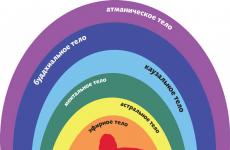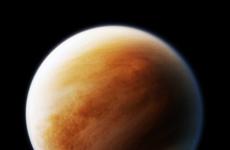Straw figures in the fields. Straw Miracle. "At the straw sheaf
Is there any point in agro chips?
STRAW locomotives, carts and cows. Labyrinths and paintings a few hundred meters in the fields. Such folk art, which is referred to only as land art, has been pleasing to the eye for more than a year. Compositions grow up both before "Dazhynkami" and after. But what is the price of the issue and how expedient is it to engage in field art? Correspondents of "SG" joined the agricultural creativity.
AN UNUSUAL idea in a field of corn. Near the Dzerzhinsky Chernikov region, the only labyrinth in Belarus. You can see Blue-eyed from an unusual angle on the corn plantation of the DAK farm. Today, the first attraction is opened here among the high thickets of the Queen of the Fields.
Tangled paths form a labyrinth in the form of a map of our country with picket stops in six regional cities. Along the way, you also need to go through a historical quest to find hidden pickets. The questions are not very difficult, but with a catch.
Student Alexander Pozharenko, the author of the idea, was looking for a partner for a long time, with whom he could bring the idea to life. Some were ready to give the land, but for a lot of money. And only the owner of the KFH "DAK" Dmitry Krylov supported the novice entrepreneur, one might say disinterestedly, inspired by the originality of the idea - he himself hatched a similar one.
In the spring Dmitry and Alexander sowed the field. But the cold spring and summer delayed the growing season of the crop. As a result, the opening of the amusement park had to be postponed from the beginning of August to the 19th. The farmer is engaged in organic farming and animal husbandry, so he did not accelerate the growth of plants with the help of chemistry: reputation is more expensive.
The drawing of the card was first drawn in a special computer program, then the tracks were literally mowed by millimeters in order to repeat it exactly, Dmitry Krylov shares the difficult technology of creating a “green” attraction:
I only drew it for two days. Then he broke it into squares, there are 56 of them in total. On each, the tracks were drawn separately. 3.5 thousand square meters of walkways have been equipped! With information boards.
Near the labyrinth there is a petting zoo where you can scratch a goat or a rabbit behind the ear. There is also a place for a tent camp for spending the night, a trade pavilion, and you can try farm products.
Wandering along the route is designed for an hour and a half. During this time, it is desirable to mark with seals at all control points in order to receive a memorable prize at the exit.
 Dmitry KRYLOV and Alexander POZHARENKO.
Dmitry KRYLOV and Alexander POZHARENKO.
Will the idea pay off financially? The ticket price for adults is 7 rubles, for schoolchildren - 4 rubles, for children under seven years old - free of charge. The cost of growing corn is 4 percent of the total cost per idea. Most of the money was drawn by the arrangement of regional centers. To break even at the end of the season, you need to sell about 2,000 tickets. "Kukupolis" (the so-called entertainment center in the field) will work until the cold weather.
On his 100 hectares, the farmer does not grow the queen of the fields en masse. And instead of silage from corn, he gives the goats compound feed. Although, most likely, in the autumn this corn maze will face the same fate as the rest of the fields - they will be harvested for silage. To do this, you will need to hire equipment. The farmer doesn't have one.
And HERE, straw creativity is more common in agricultural enterprises. For many years in a row, a competition for the best composition of bales has been announced in the Slutsk region. The initiator is the district committee of the trade union of agricultural workers. The fight is serious: if for the first time there were only six participants, now there are 17! Almost all agricultural organizations of the region. Yes, and they do more than one composition - the more, the higher the chance to become a leader. Last year the victory in one of the nominations was celebrated by OAO Podlesye-2003. This year we are also set to win. Three works are presented to the jury. The process of creating compositions was led by the chairman of the trade union committee, inspector of the personnel department Elena Kharitonchik:
Interest in the competition is great - so many ideas, sketches! To make a composition, you need about three people - for one work this year they even came up with a special frame. It turned out so great! No one can drive past - they stop, take pictures. I've seen so many cars I can't count them. This is the best compliment for us.
We begin to calculate the expense: twenty rolls of straw went to the ship, two more bales - for piglets, about four - for a cow with a calf. However, there will be no economic losses. After the end of the competition, all the straw will return to the farm fund - it will be used for bedding for livestock. The winners, whose names will be announced next week, will also receive prizes. The organizers will give them teapots and sets of mugs. Double benefit.
Making figurines out of straw is an old idea. It was born to attract people to Dazhynki. But gradually the tradition took root in many areas, the compositions stand even after the holiday. In 2013, near the Shklov agricultural town of Gorodets, agrarians installed a steam locomotive. Next to the Round, metal pins were used to create the composition. They strengthened the figures so that the wind would not blow them away. And not far from Orsha, the Moscow M1 highway was decorated with three straw pigs. What driver would not want to stop and enjoy the bright creativity of rural designers?
FREQUENTLY, compositions bring not only aesthetic, but also practical benefits. For example, in the Russian village of Krasnoye, 40 kilometers from Stavropol, a real stadium was made of straw, where children and farm workers who initiated construction now play football. Here you have a field and stands.
The building was proudly named "Zenith Arena". And they built it in just five days - they spent a little more than 40,000 Russian rubles (about $680) and 4,500 bales of straw. The farmer Roman Ponomarev didn't lose out: the unusual building drew additional attention to his products - watermelons and melons. Judging by how this news was spread by the media and how popular it became on the Internet, the profit will flow like a river. In addition, the real Zenit football club reacted positively to the joke with the name: they supported the holding of tournaments on a straw field and invited its creator to St. Petersburg. They promised to send the ticket.
In general, Russian agrarians from the south are cunning for fiction. Not only that, in Rostov, races on tractors "Belarus" are held annually. A week ago, Yuri Belykh, a machine operator from Krasnodar, drew a giant logo of the Belarusian computer game World of Tanks on the field with the help of a tractor. The size of the unusual image is 216 by 158 meters. It can even be seen from space. By the way, the mechanic himself plays "tanks" with the children and dedicated his work to the seventh birthday of the game.
An unusual reaction to this from our military. The logo of the famous game was drawn by… tankers at the training ground near Borisov. According to Senior Lieutenant Dmitry Poznyak from the 72nd Guards Joint Training Center of the AFRB, he and his colleagues approached the command the day before with an idea and received approval. Drawing 300 by 200 meters was completed by two T-72 tanks. The image can be seen from a plane flying to Moscow.
BY THE WAY
In Kyiv in May, at Eurovision, one of the fan zones was equipped with ... straw. They made fences out of it. We listened to performances right on the bales. Also, just a pile of straw was brought to the square, into which the children “dived” with pleasure.
TO THE POINT
This year, mazes created in corn fields appeared in 25 places in the Czech Republic. Most of them occupy one hectare of territory. The largest is two hectares in Brno. Created a unique route plan. It is held according to a special entertainment and educational program. Visitors receive a game card at the entrance. In the process of passing, they write down guessed passwords. With their help, they learn the key phrase, and the one who does it faster wins a prize. You can also go through the maze with your smartphone. You need to install an application and a program for reading QR codes. If you get lost, there are corridors next to the paths that lead back to the entrance. In autumn the field is mowed.
"At the straw sheaf,
one by one - kopnishka,
from the heaps - a haystack.
In the life of a rural worker, nothing was wasted, and only from straw, a unique natural material that they just didn’t make: bast shoes, dishes, utensils, and straw hats are known to all peoples who grow cereals.
For a long time, in different parts of the world, there were customs to make figures of people out of straw.
and animals.
Often such figures were used in folk rituals and holidays.
The ancient Slavs celebrated the end of the harvest by placing a female figure of the Mother of Bread on the field,
made from the latest harvested sheaves.
On Maslenitsa, an ancient Slavic pagan holiday for the New Year,
which began on the day of the spring equinox, they burned a straw effigy of Winter at the stake.
Small straw dolls were considered a talisman of the house,
reliable guardians of the hearth.
Straw and now does not leave indifferent human imagination.
Happy holidays are celebrated in different countries with competitions for making funny straw figures.
In the south of England, at the end of summer, there is a festival of straw bears.
For the holiday, men dress up in straw suits.
and, dancing, walk through the streets, begging people for alms.
In the Czech Republic, “straw” celebrations are called “Slamak”,
they are held in the Czech city of Cesky Rai.
Statues are placed around the city,
sculptures,
made from straw
and for children, a funny labyrinth is made from large bales of straw.
Every year in the Latvian city of Salaspils there is a festival of straw figures.
Funny straw animals
fairy tale characters
and cartoon characters
waiting for guests in the National Botanical Garden
city of Salaspils (Latvia)
from February to April.
The organizers of every holiday want to capture the imagination of their guests,
will be remembered for something unusual and hitherto unseen.
And this is not so easy to achieve.
And 56-year-old British farmer Chris Sadler, from Cheshire, UK,
the owner of a local ice cream company even created a peculiar tradition. Every year he creates a giant sculpture out of straw bales.
Chris and his wife Cheryl have been creating monumental straw statues since 1998.
For fun, Chris Sadler built an incomprehensible sculpture for the coming millennium, dumping 350 bales of hay into a pile. The result was a hemisphere, with a diameter of 100 and a height of 15 meters. In all directions, rays protruded from this hemisphere in different directions. What personifies his Millennium Dome (as everyone called him) - even the author himself found it difficult to say.
The 11 meter (36 ft) meerkat monument lifts the spirits of countless people,
who came to look at the straw statue of the animal.
The "Snugnick" rocket he created rises 15 meters above the field,
and surprised tourists are met by a huge straw dinosaur
Photos of the creations of the British farmer went around the world.
Here is a figure called "Angel of the North".
And this is a copy of the Ferris wheel "London Eye"
Windmill that was illuminated at night
A copy of the Jodrell Bank telescope, dedicated to the 50th anniversary of the space age. Weighing six tons
A 21-meter (71 ft) copy of the famous Big Ben tower, which is 4 times smaller than the real one in London. It took more than 500 bales of hay, with a total weight of 20 tons.
A real working clock is built into the top of the hay tower, though as a cost savings.
only 2 dials are installed, on the sides that look at the road.
Magnificent straw sculptures are also in Russia
In the city of Bobruisk, residents erected a huge monument to the well-fed Beaver from straw.
The frame of the beaver is wooden. Height about 5 meters
A giant sculpture of an eagle is installed at the railway station in the city of Oryol
and is made of straw, fixed on a wire frame.
Straw figures are also constantly presented in landscape design exhibitions at the All-Russian Exhibition Center (VDNKh).
They are made on a wooden frame and trimmed with straw.
Well, and finally:
In China, they built a 90-meter penis out of straw.
The sculpture, located in the Shaman amusement park, was named the Heavenly Column. For the construction of the structure, more than 1800 meters of straw were used, which was wrapped around a steel rod. The sculpture is located on a platform at the top of Oinlong Mountain. Park President Chen Weyan said the sculpture is a totem for the city. A Chinese legend says that a shaman named Evenki gave a cruel ruler a penis-shaped totem so that she would respect men and not kill them at will. After that, the ruler installed a totem on Mount Oinlong, according to East Asia Economic and Trade News.
The director of the Chinese Cultural Association claims that the totem symbolizes the happiness and prosperity of the ancestors.
Some tourists, meanwhile, say that the statue gives them discomfort. However, not everyone. For example, a mother who visited the park with her child said that it was just a statue and it could become a symbol of the park.
How!
Original entry and comments on
How to weave a lamb out of hay
Hay and straw are the most affordable materials for wicker garden sculptures. They are easy to process, environmentally friendly and inexpensive (or even free).
A cute lamb is a great decoration for a rustic-style flower garden or recreation area. And it’s not difficult to do this, writes Anna Krasavtseva
materials
If you want to prepare hay yourself, you will have to mow the grass in the old fashioned way with a scythe, and then dry it. Grass from a lawn mower is completely unsuitable for creativity.
In addition to the main material, you will need a strong rope for winding. It is better to wrap straw with linen twine, which is usually used for tying plants. For small hay products, twine can be replaced with a thick thread.
In addition, a zealous summer resident will probably have several pieces of wire for the frame and fastening parts, trimming wooden bars and other improvised materials on the farm.
Do not place straw figurines near resting areas if there are smokers in the house. In the open air, a straw sculpture will stand for about a month, under a roof - longer, but only if it does not become the object of attention of mice.
Choose "fleece"
It is better to weave small sculptures from hay - hedgehogs, mice, bears. Not only dense, even balls are easily obtained from it, but also small ears, legs and even curly muzzles. In contrast, large hay objects are more difficult to make.
Straw figures come out more loose, but they look more textured and last longer. This material is poorly suited for small and complex details (less than 20 cm), but is indispensable for large sculptures (from half a meter in height or width). In addition, it is preferable to use waste and disassembled straw figurines as garden mulch.
Weave a lamb from straw
Torso and head
Roll a bundle of straw into a large dense (as far as strength is enough) tourniquet, fold it in half and tie it with several turns of twine. Put a bundle of straw on the bundle and wrap it again. Continue adding straw until you have a torso with a broad chest, a bulging scruff and a narrower butt. The lamb, if it is, of course, unshorn, has a fluffy fur coat, so leave all the straws sticking out in different directions - this will only decorate the figure. Tie the ends of the twine.
Similarly, twist a straw ball - a blank for the head. To make it even, in the process of twisting, do not hesitate to crush the straw in the right direction. The coils of twine should be exactly the same as when winding yarn into a ball. Tie the ends too.
Horns
Take two pieces of strong wire. Calculate their length by adding the diameter of the lamb's head and another 15 cm to the planned length of each horn. Bend each wire in half, retreating from one of the ends by about 5 cm (so that the sharp end does not stick out), and wrap it tightly with straw to the desired length. Additionally, you can wrap the horns with thicker twine - this will give them a more interesting look. The ends of the wire equal to the diameter of the head plus 10 cm should remain unwound.
Insert both horns into the head so that the free ends of the wire stick out from the other side, and twist the latter together.

Photo: Photo by the author
muzzle
Make a lamb bangs from twine twisted into rings. Attach it to your head with a wire pin. A pine cone is suitable for the nose, and wood saw cuts for the eyes. Fix them with wire, glue or hot plastic from a glue gun.

Assembly
Attach the head to the body with a long wire "hairpin". Twist the ends of the wire and tuck inward. Stick wooden “legs” into the ground and carefully plant the torso on them. For strength, you can fasten a piece of wire to each bar and, passing it through the body, twist the ends and hide them inside.
straw horse

We will need:
Hay. If you live in the city, you can buy dry grass at a pet store. Well, summer residents and villagers know where to find the best hay.
A spool of thread, green is better, but any other color is possible.
PVA glue.
Wooden sticks, about 1 cm in diameter.

First we will make the head with the neck.
We take a bunch of hay, we form a sausage out of it.
We bend about a third of the sausage so that we get the letter "G". We take the threads and begin to wrap the workpiece quite tightly so that the product does not crumble.

Now let's make the body.
Let's take another bunch of hay - one and a half times more in volume than it took on the head. Again we form a sausage, bend in half. We insert the neck into the place of the fold (see figure). Then the threads go again. If it seems to you that the body is too thin or short, you can add small bunches of straw along the way.
For the tail and mane, you need to choose the longest straws. We tie them with a thread from one end.
First, attach the tail. We glue the tip wrapped with threads with glue and insert it into the hole previously made in the body. We hope everyone can imagine where the horse has a tail?

Before attaching the mane, we will make the ears (see picture).
We will form two small sausages from hay and attach it to the head.
Now you can attach the mane with threads.

Well, what is a horse without legs? Take a stick and cut it into four identical pieces. Coat the sticks at one end with glue and fix.
Let's wait until everything sticks together, and only then we take a little more straw, attach it to the sticks-legs and wrap it with threads.
Now the horse can be decorated.
Cut off excess straw with scissors. If necessary, we strengthen the threads with glue. Glue on the eyes. They can be made from anything: from wooden beads, dried berries (and even fresh ones, they will dry later), from lime fruits. We will decorate the body with dry flowers or leaves, and you can also make a blanket and harness.
The horse is ready to go!
We take a bunch of hay ...
Straw Art Festival- one of the most original holidays, which takes place annually in rural areas of Japan. Farming communities in Kagawa and Niigata prefectures put on original exhibitions of giant straw sculptures left in the fields after the harvest.

Perhaps one of the most famous straw sculptures in the world was installed a couple of years ago in the Dutch town of Nieuwerkerk. But the Japanese can boast of a whole zoo: macaques, elephants, turtles and even sharks - you will not see anyone at the festival.

This year, among the most memorable sculptures, one should note a shark with an open mouth, whose jaws looked really intimidating, as well as a friendly wallaby kangaroo, in the bag of which the children who came to the holiday could sit. Note that even the scary predators in straw guise looked very friendly. In addition, if desired, it was possible to climb a ship and a tank, the sculptures of which were also made by local craftsmen.

Luckily, the sculptures are solidly built, following the same pattern as the thatched cottages. At the base is a wooden frame, and on top it is covered with dried stems. Thanks to this, the audience could feel safe without damaging or breaking the wonderful structures.

Of course, the Straw Art Festival is a wonderful event that is pleasant to visit on a warm Sunday afternoon with the whole family. Positive emotions and a sea of impressions for children and adults are guaranteed! Perhaps the idea of an original holiday can be adopted by our farmers.

Every year, unusual compositions made of straw appear in the fields in Belarus in front of Dozhinki. The idea is not new: straw figures can be found in Germany, Poland, and even Japan. Belarusian agricultural creativity pleases motorists. Many cannot pass by, stop cars and take pictures against the background of straw people, cows, roosters and tractors. To be honest, we couldn't resist either.
Straw figures of a man and a woman in national costumes near the village of Ilyanskie Khutory in the Vileika district of the Minsk region.
As a rule, straw figures reach a height of several meters and can be seen from afar. The theme of compositions is usually devoted to agriculture. You can meet cows, and roosters, and combines with tractors. However, on the roads of the Myadel and Vileika regions, there are also national motifs in the straw art. Imagine a pair of giant Belarusians in national costumes in the middle of a field. However, why imagine, if our photo report clearly demonstrates this.

A fervent straw shepherd with cows near the village of Shikovichi, Myadel district, Minsk region.

A cheerful caterpillar made of straw near the village of Sosenka, Vileika district, Minsk region.

The princess and the castle near the village of Pashkovschina, Myadel district, Minsk region.
Castles are also a favorite theme of rural designers. A couple of bales of straw, windows and a cardboard roof - consider the castle ready.

A rooster and a hen near the village of Starinki, Vileika district, Minsk region.

Composition with a tractor in Myadel, Minsk region.

What combine can be on the field without a combiner? Another figure in Myadel, Minsk region.

A colorful bear near the village of Lukovets, Vileika district, Minsk region.
When you see such compositions, you think with regret that they are short-lived and sooner or later will disappear from the field. Until the cold sets in and the heavy rains begin, there is still time to capture yourself against the background, for example, of such a giant bear.

Composition near the village of Shelkovshchina, Myadel district, Minsk region.

Hares near the village of Shikovichi, Myadel district, Minsk region.

Composition near the agricultural town of Svatki, Myadel district, Minsk region.

A family couple made of straw on the road from Vileyka to Minsk.







